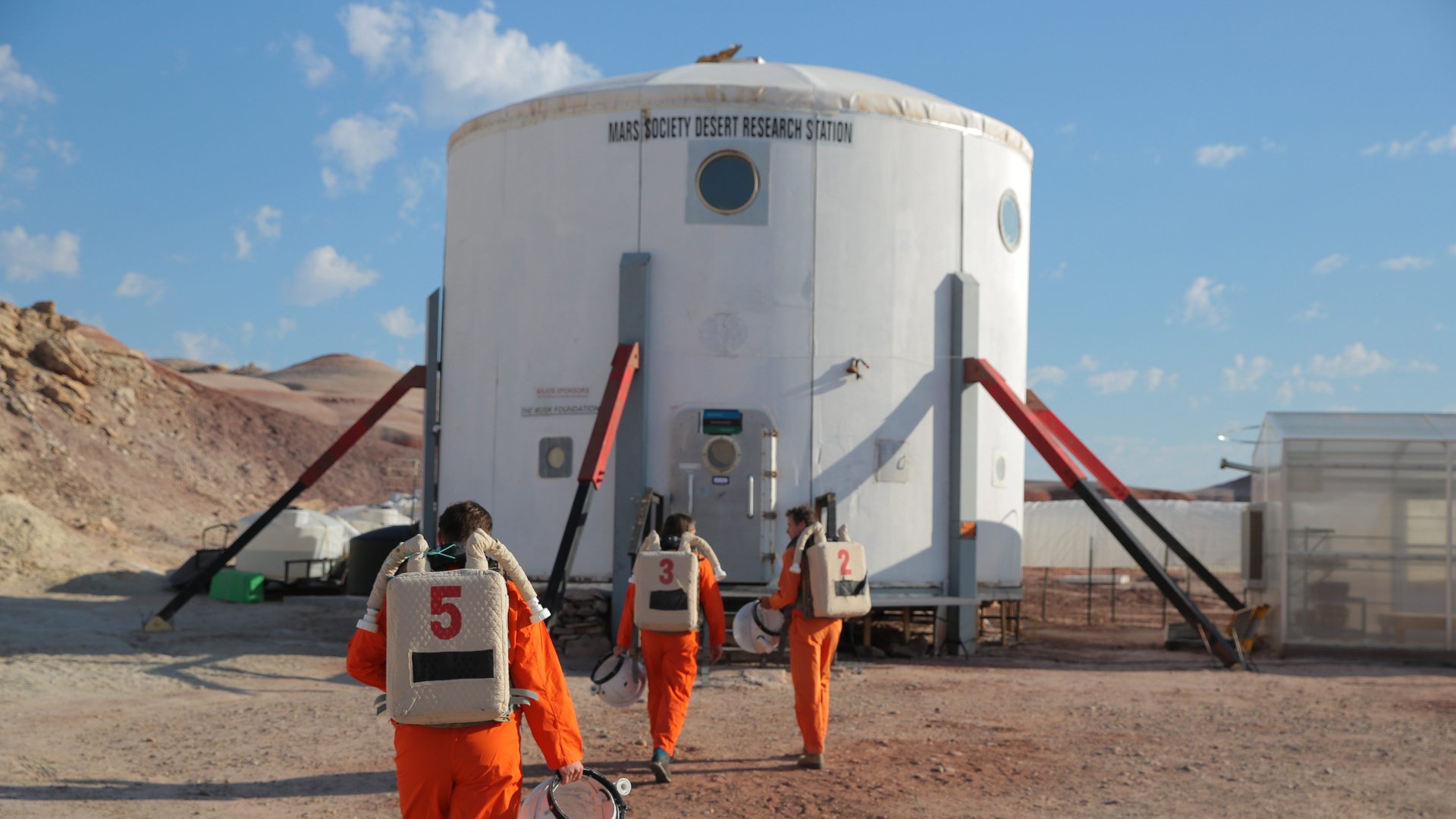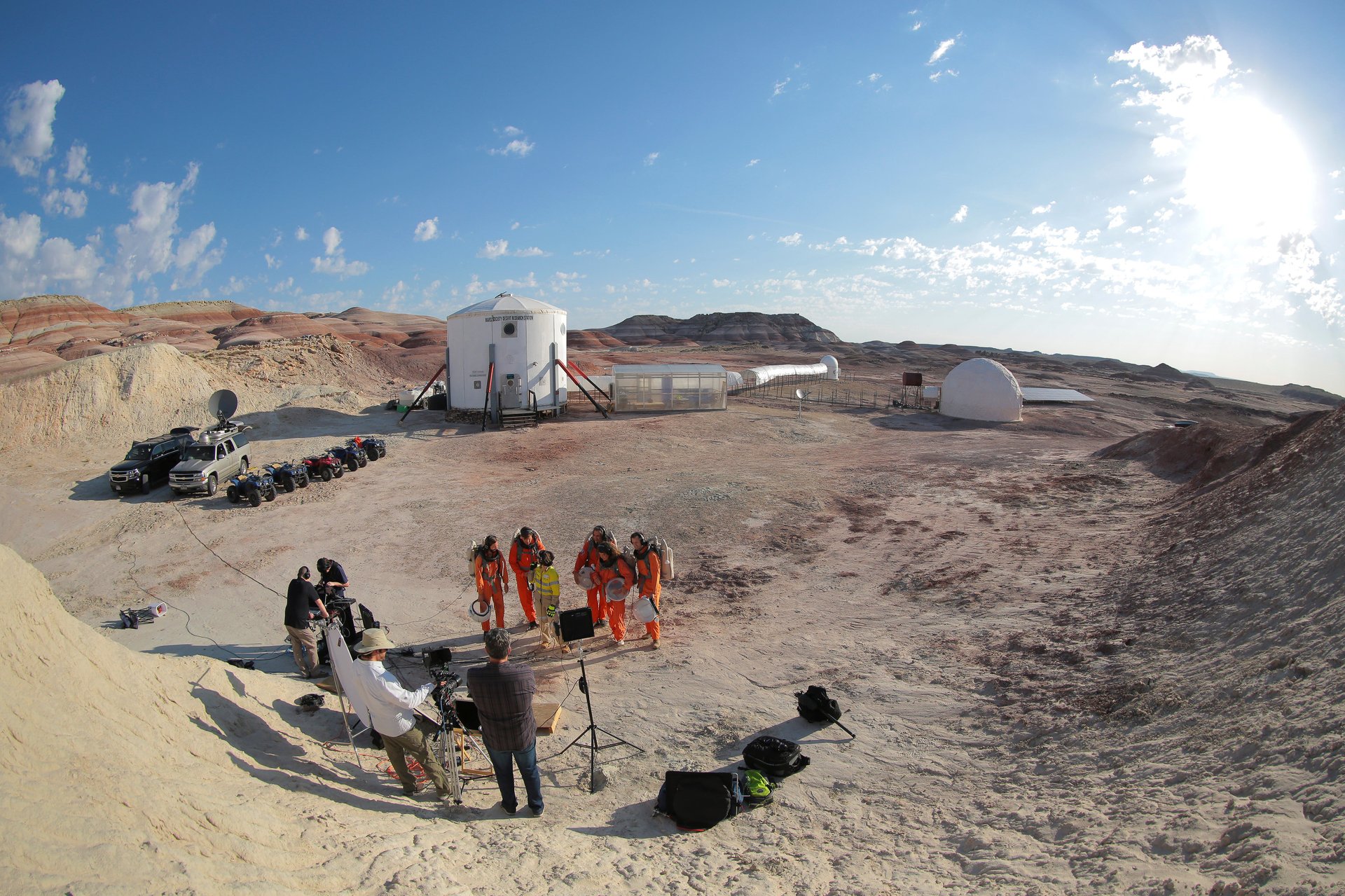IKEA designers are training with NASA’s space architect to come up with ideas for compact storage
A crew of IKEA designers embarked on a special kind of space research last week. Their mission: Explore space-saving solutions for tiny homes and extreme pack rats… by living in an actual Mars research station.


A crew of IKEA designers embarked on a special kind of space research last week. Their mission: Explore space-saving solutions for tiny homes and extreme pack rats… by living in an actual Mars research station.
Confined in Utah’s Mars Desert Research habitat for three days—habitat diameter: 33 feet—the five-person team experienced the cramped living quarters and zero-waste living necessary to survive a journey to outer space. “I’ve got them on a schedule very much like a schedule a Mars crew would have,” explained NASA space architect and engineer Constance Adams, who trained the team. All six spoke to reporters via live satellite at IKEA’s June 7 open house in Älmhult, Sweden.
Adams was the architect behind the habitat for the first human mission to Mars, and notes that in addition to small living quarters, astronauts have to learn to take economical showers, familiarize themselves with resilient building materials, and prepare their own meals. (Because each kilo of mass costs $2 million to transport to Mars, no piece of packaging is wasted. Astronauts are even trained to convert the CO2-filtering plants they bring aboard into palatable meals.)
“In the end, the design we end up doing in these space architecture projects is incredibly sustainable,” Adams said. “It teaches us on how to be sustainable for life on earth.”

In a blog post last week, IKEA designer Michael Nikolic called the experience “crazy” and fun. “We’re basically completely isolated for three days to get a taste of what astronauts go through for three years,” he wrote. “It’s almost like that misery you feel when you’re out camping.”
IKEA is hoping to translate insights from the Mars research station into innovative furniture solutions for dense urban environments. Beyond the three-day immersion, IKEA’s design team will continue to work with NASA’s architects, as well as the Lund University School of Industrial Design, who have been sending graduate students to NASA’s bootcamps since 1999.
“My dream outcome will be to solve the biggest problem on earth…storage,” said IKEA’s head of design, Marcus Engman. “How could you design storage in a completely new way?” Engman hopes that experimentation with new collaborators and extreme habitats will produce design breakthroughs for the 74-year old furniture company: “We put up crazy hard demands on doing great design, then from that we get solutions that I think will work on earth better than anything.”